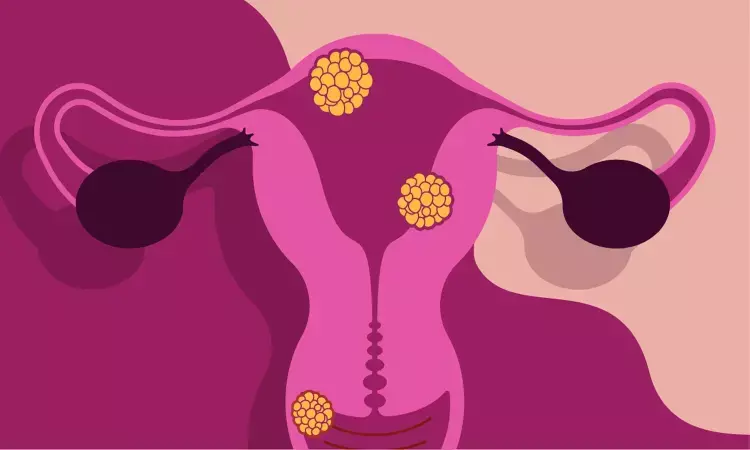- Home
- Medical news & Guidelines
- Anesthesiology
- Cardiology and CTVS
- Critical Care
- Dentistry
- Dermatology
- Diabetes and Endocrinology
- ENT
- Gastroenterology
- Medicine
- Nephrology
- Neurology
- Obstretics-Gynaecology
- Oncology
- Ophthalmology
- Orthopaedics
- Pediatrics-Neonatology
- Psychiatry
- Pulmonology
- Radiology
- Surgery
- Urology
- Laboratory Medicine
- Diet
- Nursing
- Paramedical
- Physiotherapy
- Health news
- Fact Check
- Bone Health Fact Check
- Brain Health Fact Check
- Cancer Related Fact Check
- Child Care Fact Check
- Dental and oral health fact check
- Diabetes and metabolic health fact check
- Diet and Nutrition Fact Check
- Eye and ENT Care Fact Check
- Fitness fact check
- Gut health fact check
- Heart health fact check
- Kidney health fact check
- Medical education fact check
- Men's health fact check
- Respiratory fact check
- Skin and hair care fact check
- Vaccine and Immunization fact check
- Women's health fact check
- AYUSH
- State News
- Andaman and Nicobar Islands
- Andhra Pradesh
- Arunachal Pradesh
- Assam
- Bihar
- Chandigarh
- Chattisgarh
- Dadra and Nagar Haveli
- Daman and Diu
- Delhi
- Goa
- Gujarat
- Haryana
- Himachal Pradesh
- Jammu & Kashmir
- Jharkhand
- Karnataka
- Kerala
- Ladakh
- Lakshadweep
- Madhya Pradesh
- Maharashtra
- Manipur
- Meghalaya
- Mizoram
- Nagaland
- Odisha
- Puducherry
- Punjab
- Rajasthan
- Sikkim
- Tamil Nadu
- Telangana
- Tripura
- Uttar Pradesh
- Uttrakhand
- West Bengal
- Medical Education
- Industry
Vaginal swabs best compared to urine testing for diagnosing various STDs among women

The Centers for Disease Control and Prevention suggests that vaginal swabs are the best form of sample for women being tested for gonorrhea, chlamydia, and/or trichomoniasis compared to urine testing. This study was published in The Annals of Family Medicine.
The two most common sexually transmitted infections (STIs) that must be reported in the United States are Chlamydia trachomatis (CT) and Neisseria gonorrhoeae (NG), while Trichomonas vaginalis (TV), despite not being a disease that must be reported, is the most prevalent curable non-viral STI worldwide. These illnesses affect women disproportionately, and testing is required to detect infections. Although vaginal swabs are the suggested sample type, urine is the specimen that women utilize the most frequently. The goal of the study by Kristal Aaron and colleagues were to compare the diagnostic sensitivity of commercially available tests for female urine specimens and vaginal swabs.
Studies that met the following criteria: (1) employed a reference standard; (2) assessed commercially available assays; (3) reported results for women; (4) contained data from the same test on both a urine specimen and a vaginal swab from the same patient; (5) were published in English. For each pathogen, pooled values for sensitivity and the related 95% confidence intervals (CIs) as well as odds ratios for any performance differences were determined.
The key findings of this study were:
With 30 CT comparisons, 16 NG comparisons, and 9 TV comparisons, 28 qualifying articles were found.
94.1% and 86.9% for CT, 96.5% and 90.7% for NG, and 98.0% and 95.1% for TV were the pooled sensitivity estimates for vaginal swabs and urine, respectively (all P values.001).
Nevertheless, for TV, the OR that vaginal swabs were more sensitive than urine did not achieve statistical significance. The pooled sensitivity for vaginal swabs was consistently higher than that of urine. Nevertheless, if a fixed effects model was employed, the OR that vaginal swabs were more sensitive than urine was statistically significant. This is because TV had a small sample size and moderate to high heterogeneity, thus researchers were cautious in employing a random effects model.
Reference:
Aaron, K. J., Griner, S., Footman, A., Boutwell, A., & Van Der Pol, B. (2023). Vaginal Swab vs Urine for Detection of Chlamydia trachomatis, Neisseria gonorrhoeae, and Trichomonas vaginalis: A Meta-Analysis. In The Annals of Family Medicine (Vol. 21, Issue 2, pp. 172–179). Annals of Family Medicine. https://doi.org/10.1370/afm.2942
Neuroscience Masters graduate
Jacinthlyn Sylvia, a Neuroscience Master's graduate from Chennai has worked extensively in deciphering the neurobiology of cognition and motor control in aging. She also has spread-out exposure to Neurosurgery from her Bachelor’s. She is currently involved in active Neuro-Oncology research. She is an upcoming neuroscientist with a fiery passion for writing. Her news cover at Medical Dialogues feature recent discoveries and updates from the healthcare and biomedical research fields. She can be reached at editorial@medicaldialogues.in
Dr Kamal Kant Kohli-MBBS, DTCD- a chest specialist with more than 30 years of practice and a flair for writing clinical articles, Dr Kamal Kant Kohli joined Medical Dialogues as a Chief Editor of Medical News. Besides writing articles, as an editor, he proofreads and verifies all the medical content published on Medical Dialogues including those coming from journals, studies,medical conferences,guidelines etc. Email: drkohli@medicaldialogues.in. Contact no. 011-43720751


